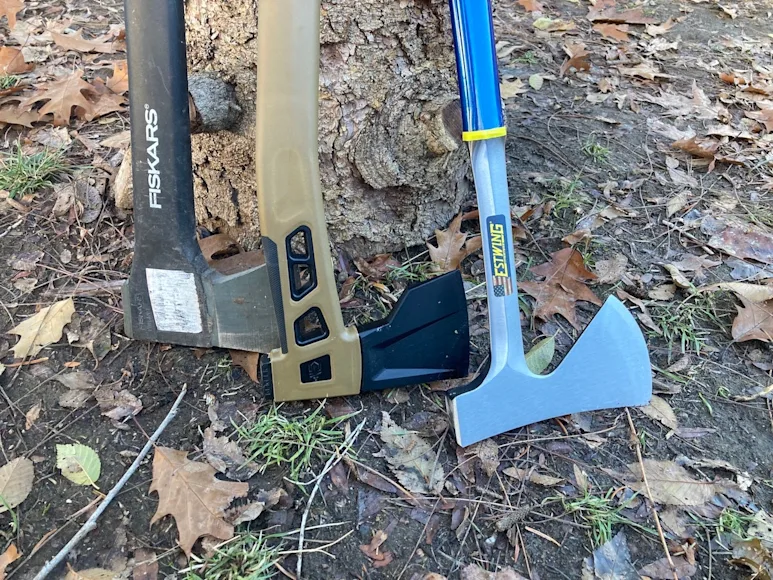_We may earn revenue from the products available on this page and participate in affiliate programs. Learn more ›
_
Best Overall
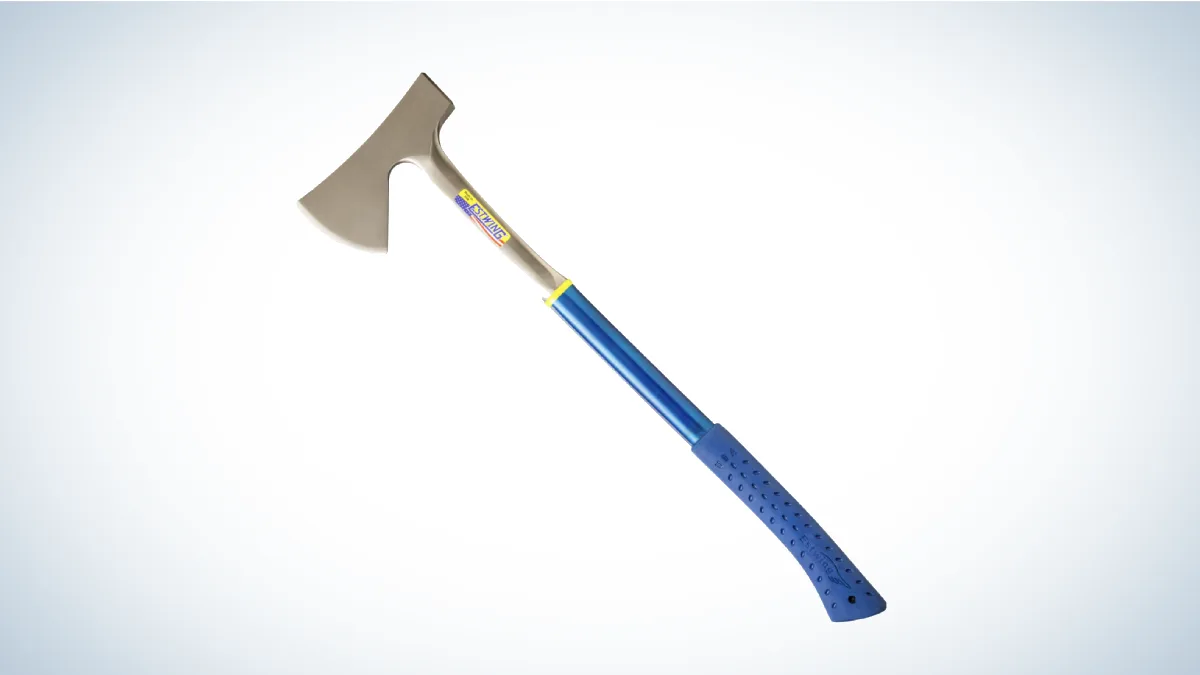
Estwing Long Handle Camper’s Axe
Best for Splitting Wood
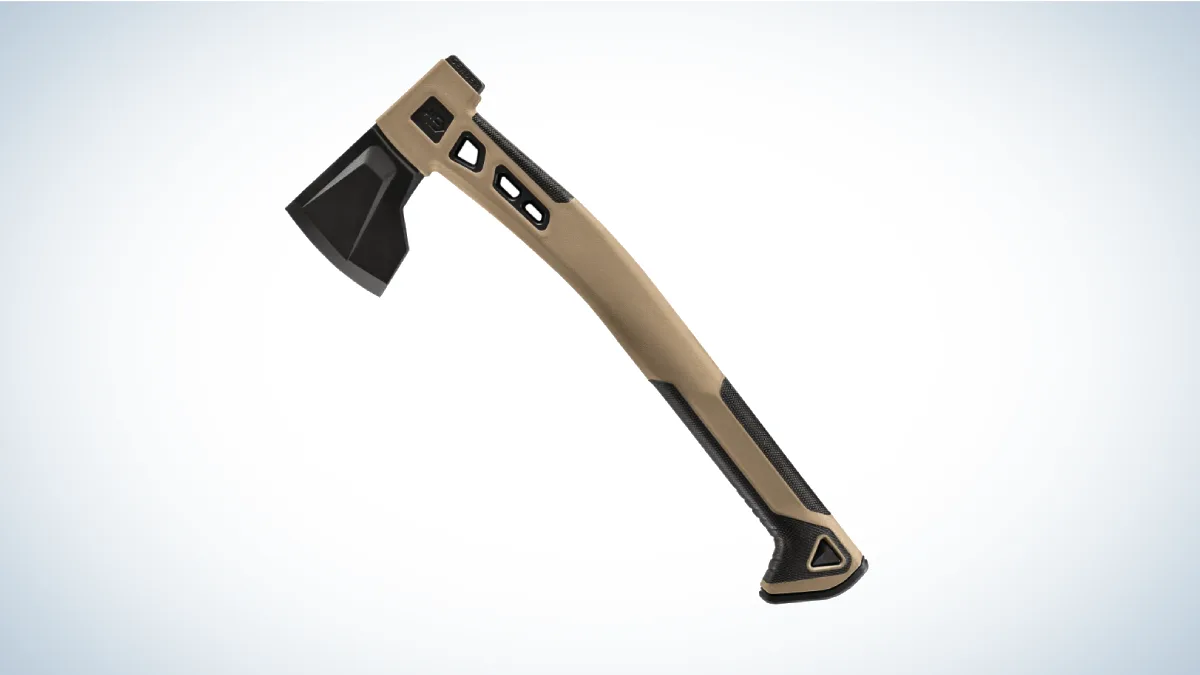
Gerber Bushcraft Axe
Best for Felling
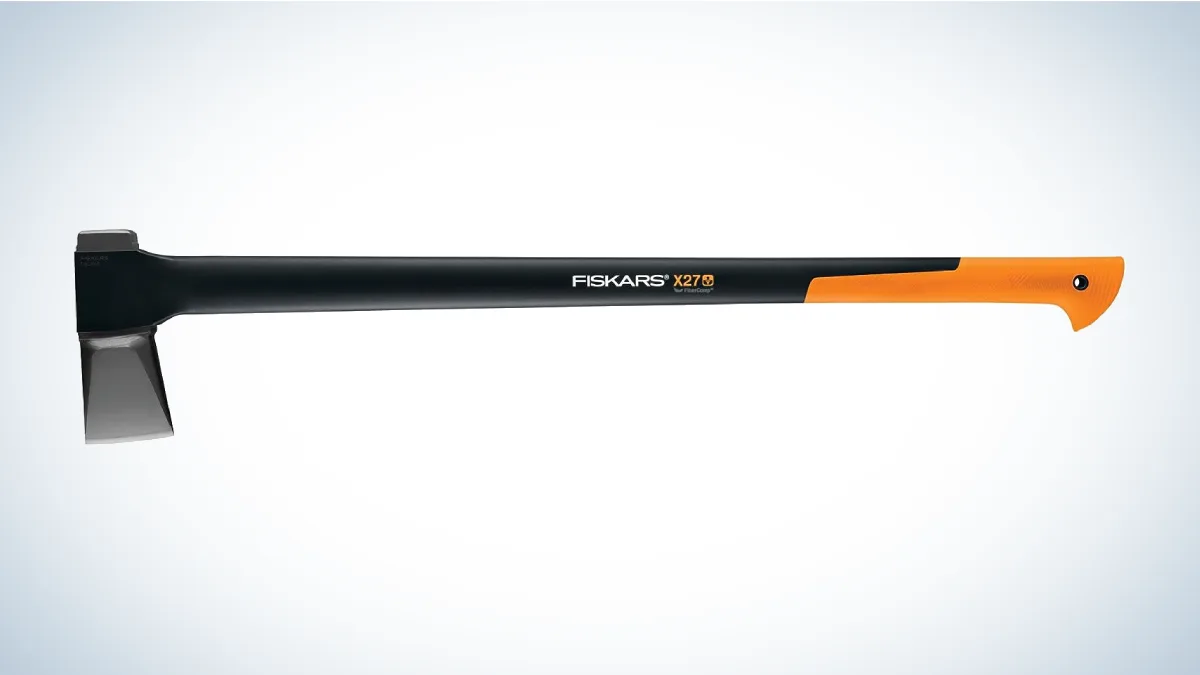
Fiskars X27 Super Splitting Axe
When investing in a camping axe, I’ve always found that I gravitate towards options that offer versatility and can be used outside of camping applications. To find the most effective and the most versatile, we tested a bunch of popular camping axes by chopping, splitting, and shaving down wood to store for winter. While camping axes were the main focus, we included a few hatchets, as well. Hatchets are ideal as a compact option, but not all axes and hatches are intended for the same purpose, which is why we tested and reviewed a variety of options.
After hours of felling and splitting, our arms were tired, our wood piles were full, and, most importantly, we had finally determined the best camping axes you can buy.
Best Overall: Estwing Long Handle Camper’s Axe
Best for Splitting Wood: Gerber Bushcraft Axe
Best for Felling: Fiskars X27 Super Splitting Axe
Best Hatchet: Hults Bruk Almike Hatchet
Best Budget: Defender Xtreme Axe
How We Picked the Best Camping Axes
We chose our list of the best camping axes based on various criteria, including but not limited to balance, precision, overall performance, quality of construction, and how well they held an edge after extended use. The durability was more challenging to test due to the limited time in this specific setting. Still, as someone who grew up in a home heated by firewood and who has used axes throughout my life, I can make some educated conclusions regarding durability based on construction, materials, and general use.
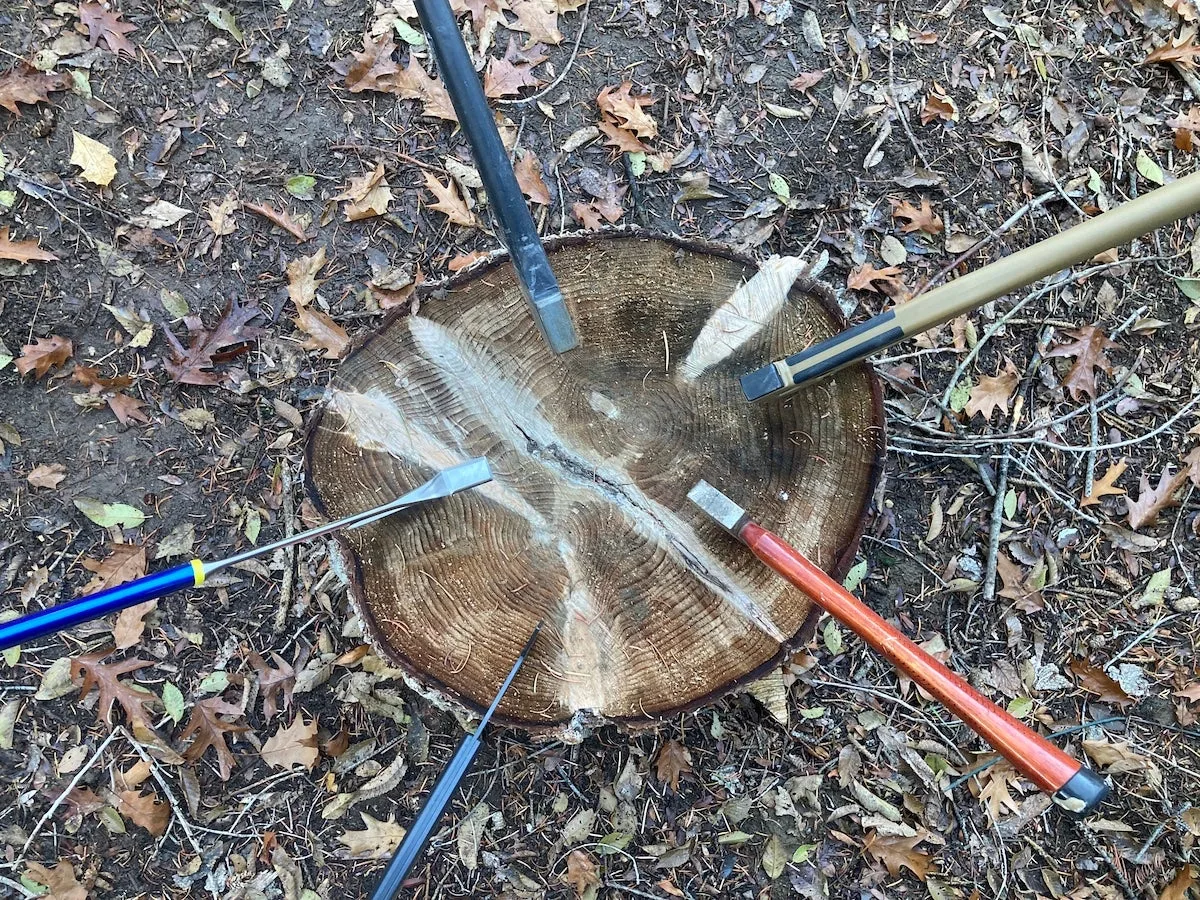
I spent hours chopping and splitting to test out these top-rated axes. Meg Carney
All of the camping axes we tested for this review were used to split wood for use in a home fireplace. While this isn’t necessarily a camping setting, the use case is similar to the intended application of the tools in the field. The focus of the axe tests was chopping and splitting wood, not felling trees. However, some axes featured on this list do have those capabilities.
These products and product descriptions are subject to change or be updated as we conduct further testing and complete more market research.
Axe Terminology
Before reading our reviews and recommendations, it might be helpful to understand some commonly used terms associated with axes.
Beard: part of the axe bit hanging down on the bottom
Belly: longest part of the haft opposite the bit
Bit: part of the head from the sharpened edge to the front of the haft, also known as the blade or edge
Cheek: part of the bit behind the bevel (sharpened edge)
Eye: hole in the axe head where the haft goes through
Haft: axe handle
Head: the cutting head of the axe
Heel: bottom corner of the bit
Knob: end of the axe handle
Poll: back of the axe head
Shoulder: where the head mounts to the haft
Throat: part of the haft curves into a grip to provide durability and comfort
Toe: upper part of the bit where the cutting edge starts
Wedge: piece of the handle pounded into the top of the axe haft to attach the head
Best Camping Axes: Reviews and Recommendations
Best Overall: Estwing Long Handle Camper’s Axe
Best Overall

Specs
Blade Materials: Steel
Handle Materials: Blue shock reduction grip
Weight: 3.25 lbs
Overall Length: 26”
Pros
Forged in the U.S.
Good balance and swing
Comfortable handle grip
Excellent splitting power
Simple, durable design
Cons
Long handle may be too much for some campers, but a smaller camper’s axe available
For durability and performance, the value of the Estwing Long Handle Camper’s Axe is hard to beat. While a long-handled axe may not be for everyone, I found this to be highly durable and easy to use both in my backyard and at a campsite. The 26-inch handle is suitable for splitting firewood or even felling small trees, so the versatility was a draw. When swinging this axe, I was surprised to find the splitting power adequate for the weight.
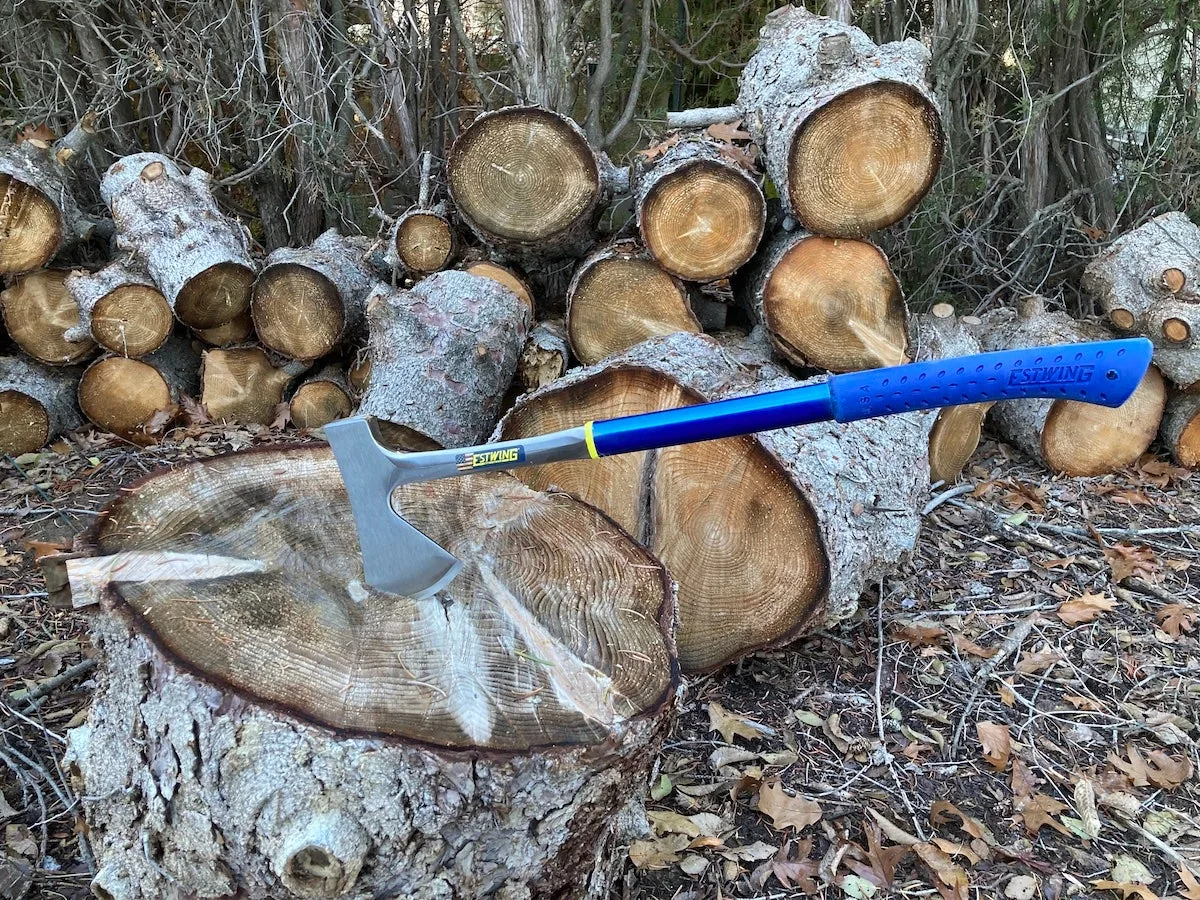
This Estwing camping axe is plenty powerful for splitting wood for a fire. Meg Carney
A standout feature of this axe is that it is all one cohesive material: steel. This alone substantially improves the longevity and durability of the axe. It also helps it stand up to harsh weather better than axes with wooden handles.
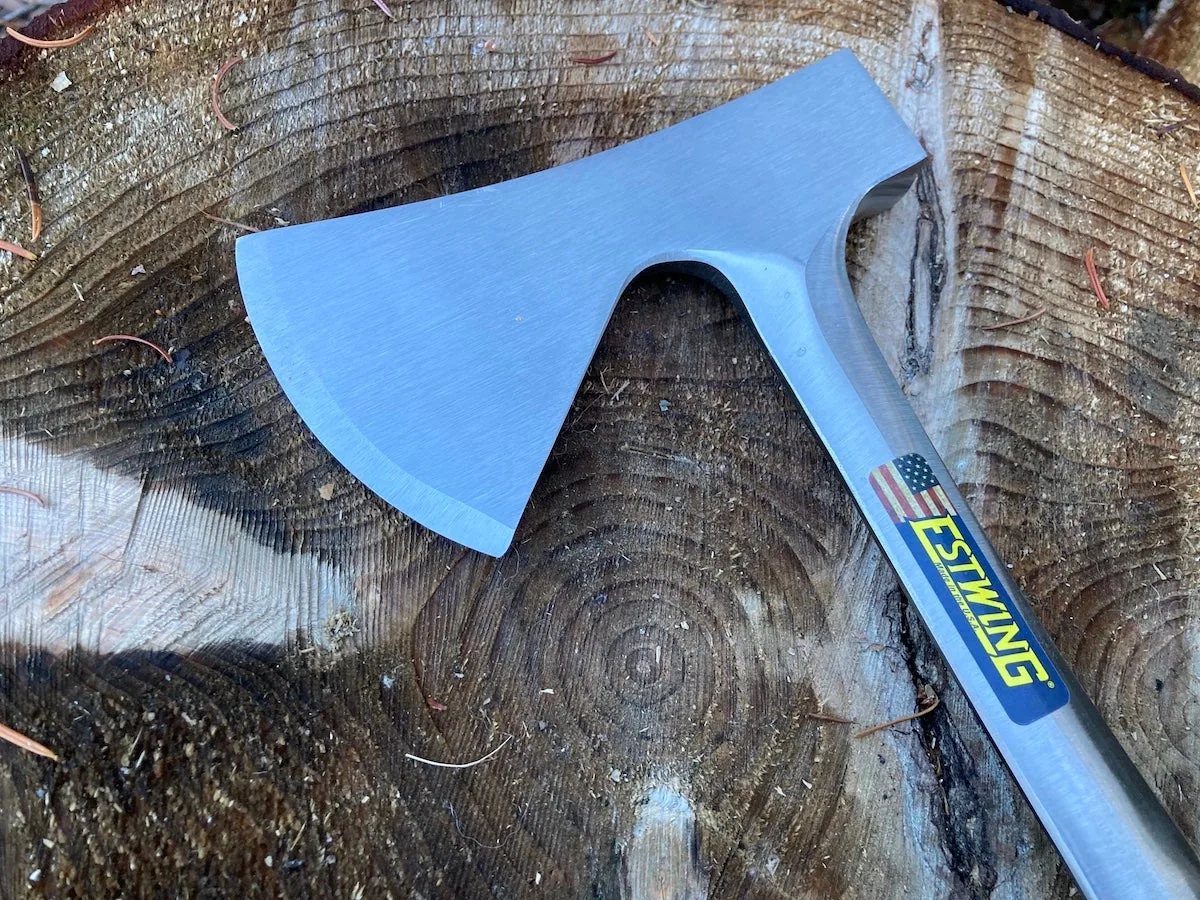
I can tell this axe will last for plenty of camping seasons to come thanks to its steel construction. Meg Carney
The grip on the axe did well, absorbing much of the shock and vibration when splitting firewood and making it comfortable for extended use. I can see myself using the axe for a long time, whether for trimming small branches, splitting firewood, or chopping down saplings as needed.
Best for Splitting Wood: Gerber Bushcraft Axe
Best for Splitting Wood

Specs
Blade Materials: Forged high carbon steel
Handle Materials: Composite with rubber over molding
Weight: 4.5 lbs
Overall Length: 26.25”
Pros
Heavier weight is ideal for splitting wood
Storage area inside the handle
Corrosion-resistant head
Head design made it easy to wiggle free while splitting
Well-designed hammer on back of head
Cons
Storage area can be hard to open at first and then comes loose after extended use
The Gerber Bushcraft Axe may be larger and heavier than some campers need, but this is a top contender if you’re looking for an excellent all-around axe to keep in your truck, take hunting, or use as a bushcraft axe
. It has some unique features that drew me in, including the head design and the waterproof storage inside the handle.

This Gerber camping axe has a unique head design perfect for splitting wood. Meg Carney
The storage in the handle is a contention point for me as I see the functionality but don’t love the application. I found it hard to open initially. But once I used it a few times, I noticed that it would come loose periodically while splitting wood, which seemed like it could be a fatal flaw and could use a redesign.
The splitting power overall was excellent. It was one of my favorites for splitting wood. The weight and shape of the axe improved my splitting power and even made pulling the axe out of the wood easier when it would get stuck.
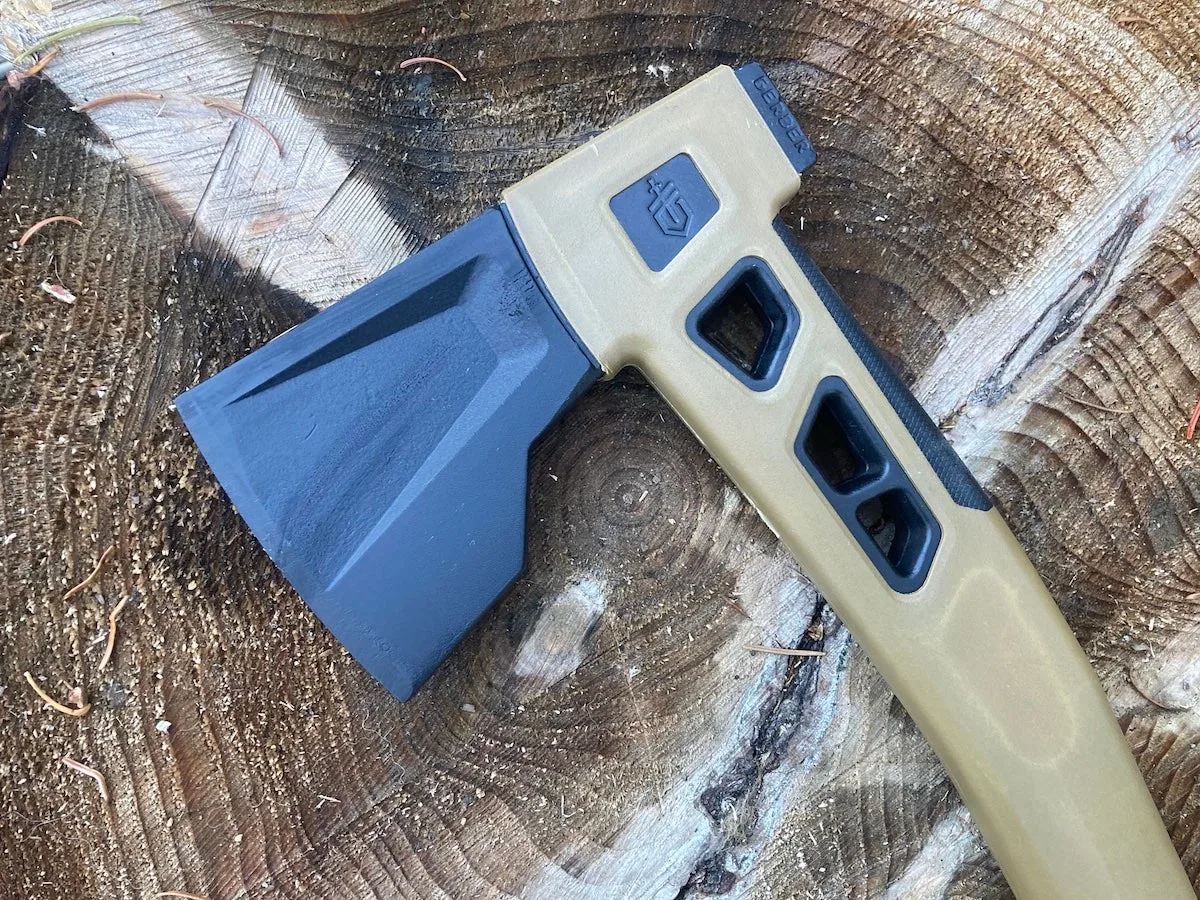
The corrosion-resistant head makes this axe ideal for the outdoors—it will last for plenty of camping seasons. Meg Carney
I can see this axe lasting a long time, and its corrosion resistance is a bonus for someone like me who doesn’t always remember to bring the axe inside after using it. Since this is a full-sized axe and you may be shopping for something smaller, Gerber also has a bushcraft hatchet
with a similar design in a smaller package.
Best for Felling: Fiskars X27 Super Splitting Axe
Best for Felling

Specs
Blade Materials: Hardened forged steel blade
Handle Materials: Fiber composite
Weight: 6.3 lbs
Overall Length: 36”
Pros
Long handle is ideal for tall users and splitting power
Suitable for splitting, chopping, and felling
Great value for the price
Blade doesn’t get stuck as easily as others while splitting
Good balance
Cons
Handle will be too long for some people
Unsure of handle durability
Fiskars has a bunch of excellent and affordable axes and hatchets to fit anyone’s chopping and wood-splitting needs. While a Fiskars hatchet
may be ideal for a portable camping option, I wanted to include an axe suitable for taller users. The Fiskars X27 Super Splitting Axe has a 36-inch long handle that works well for felling or simply splitting firewood for someone taller. While I struggled a little as a 5-foot-7 person using this axe, my 6-foot partner liked it better than others.
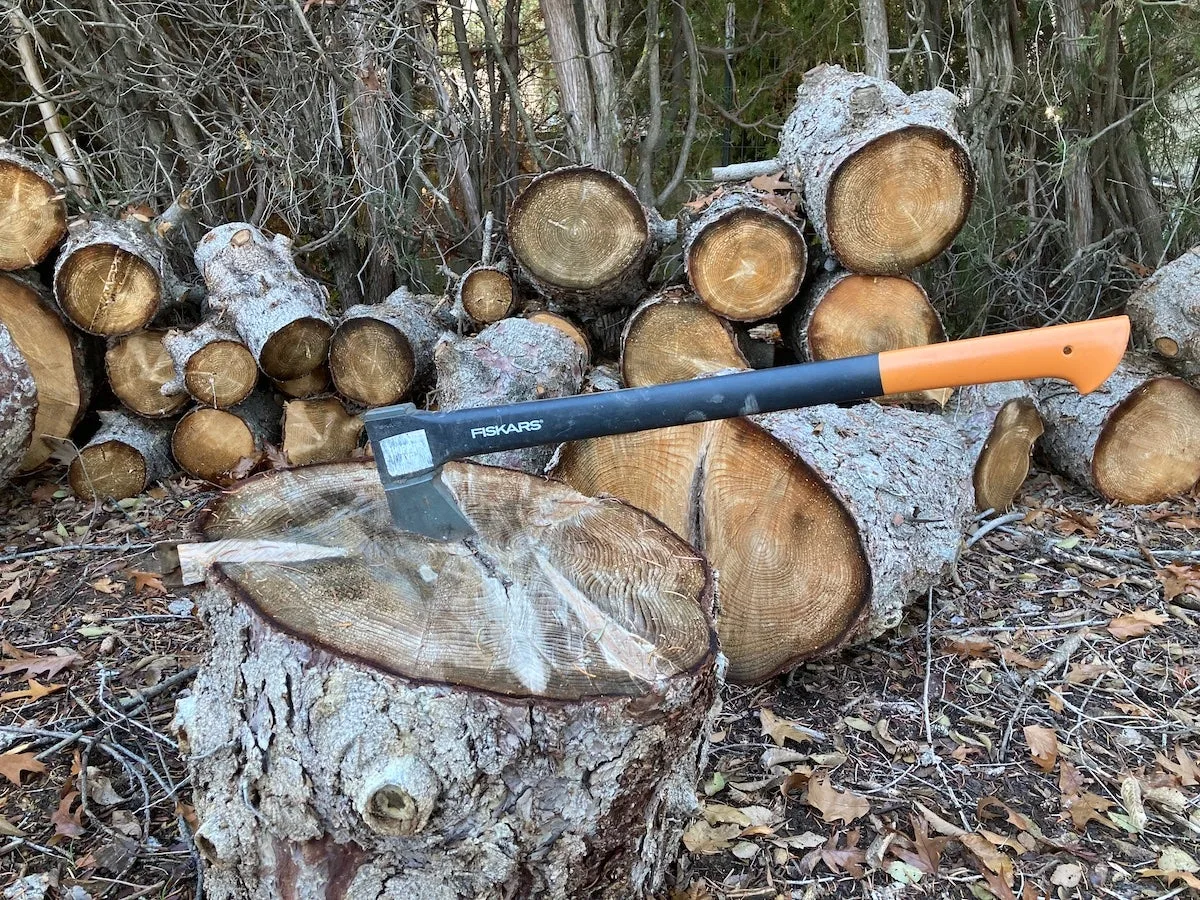
This Fiskars camping axe has an extra long handle that makes it more ideal for taller people. Meg Carney
The splitting power is good for the weight and handle length, and I appreciated that, unlike with some other spitting axes I tried, the head of this axe didn’t get stuck as quickly. I can see this axe lasting for a long time with careful use and upkeep, but I am unsure about the durability of the handle materials.
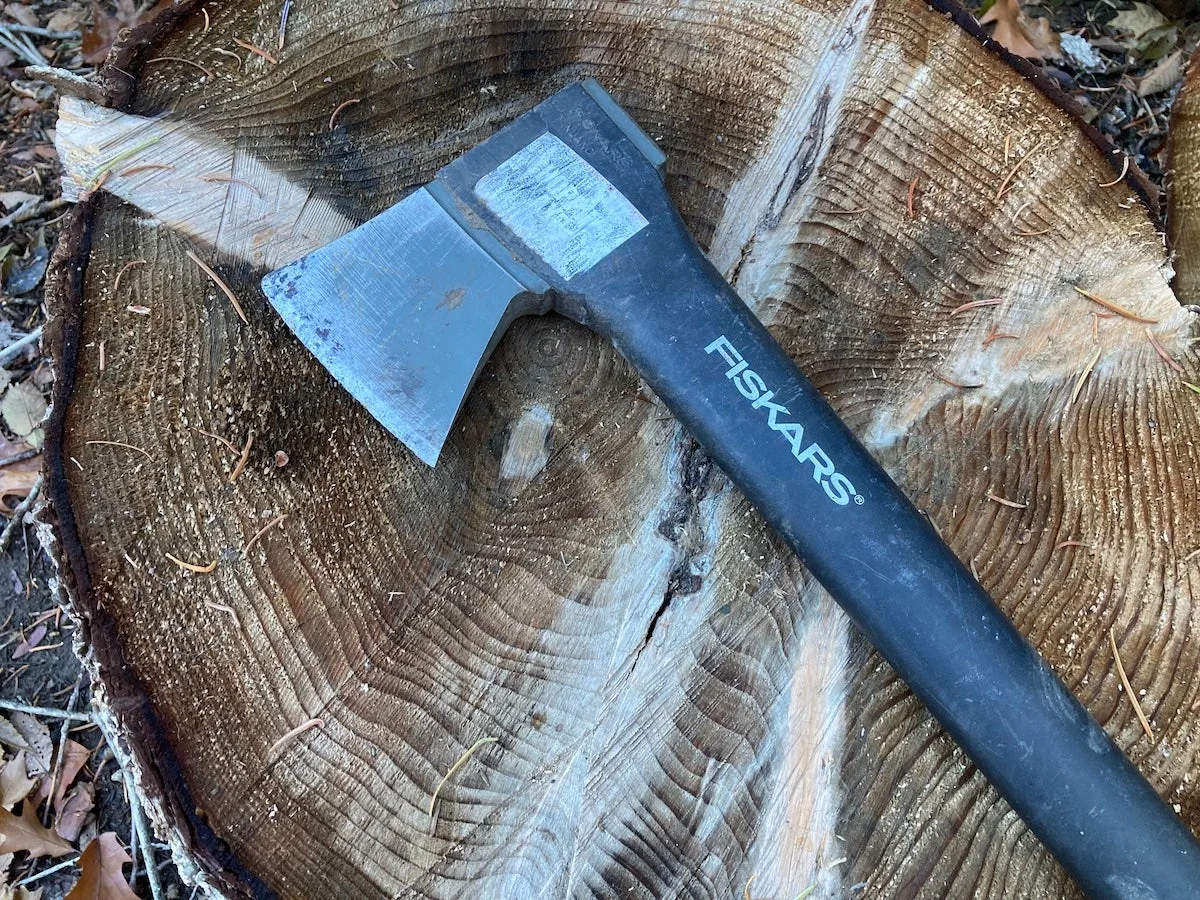
I found the forged steel head is easy to remove from wood during splitting. Meg Carney
Speaking of the handle, it has a textured non-slip coating to improve your grip and an ergonomic design that makes it more comfortable to hold while you work.
Best Hatchet: Hults Bruk Almike
Best Hatchet
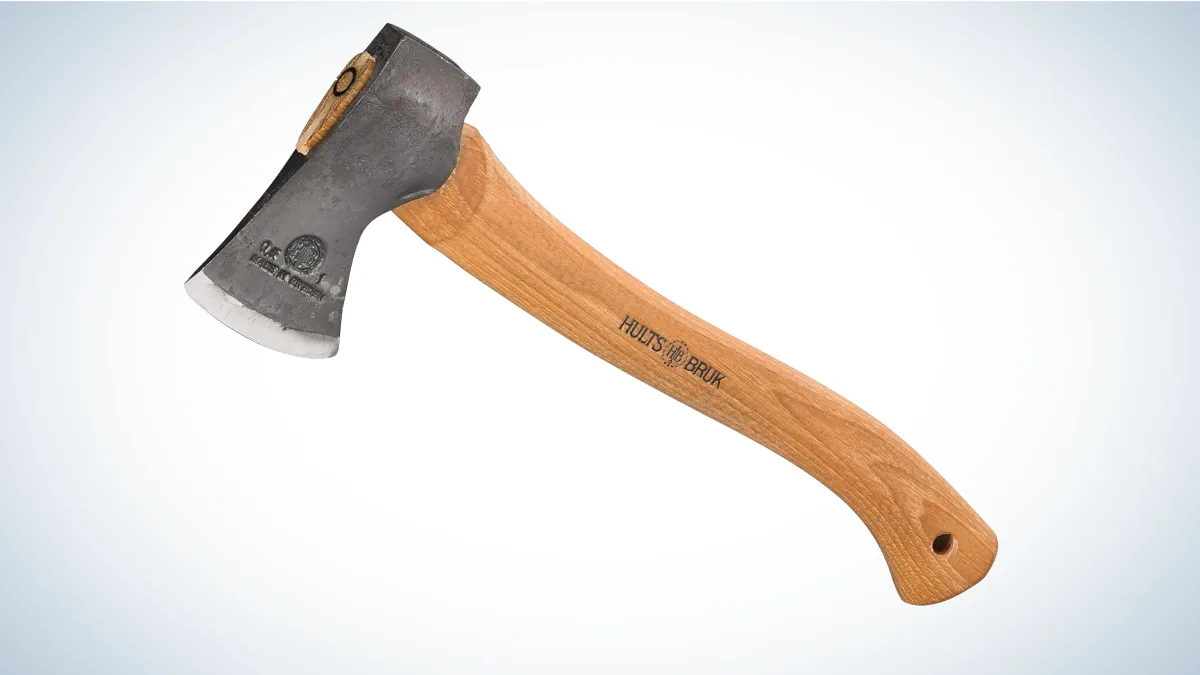
Specs
Blade Materials: Swedish steel
Handle Materials: American hickory
Weight: 1.75 lbs
Overall Length: 16”
Pros
Small, and compact
High quality materials
Great for creating kindling
Holds an edge well
Ready to use out of the box
Cons
Price
The Hults Bruk Almike is one of the best options for anyone looking for a hatchet or a quality bushcraft axe. Not only is it a beautifully crafted tool, it performs well, too. The compact size makes it portable while offering a fair bit of versatility. While small, it has decent splitting power for smaller pieces of wood, and it works like a dream to cut down larger pieces for kindling.
Straight out of the box, this hatchet is sharp and ready to go, and the included care instructions make it easy to keep the axe in working condition for many years. The hand-forged head holds an edge well but needs frequent upkeep. The higher price may be off-putting to some, but you’re paying for a hand-crafted tool designed to last a lifetime of use and one that can likely be passed down for generations.
Best Budget: Defender Xtreme Axe
Best Budget
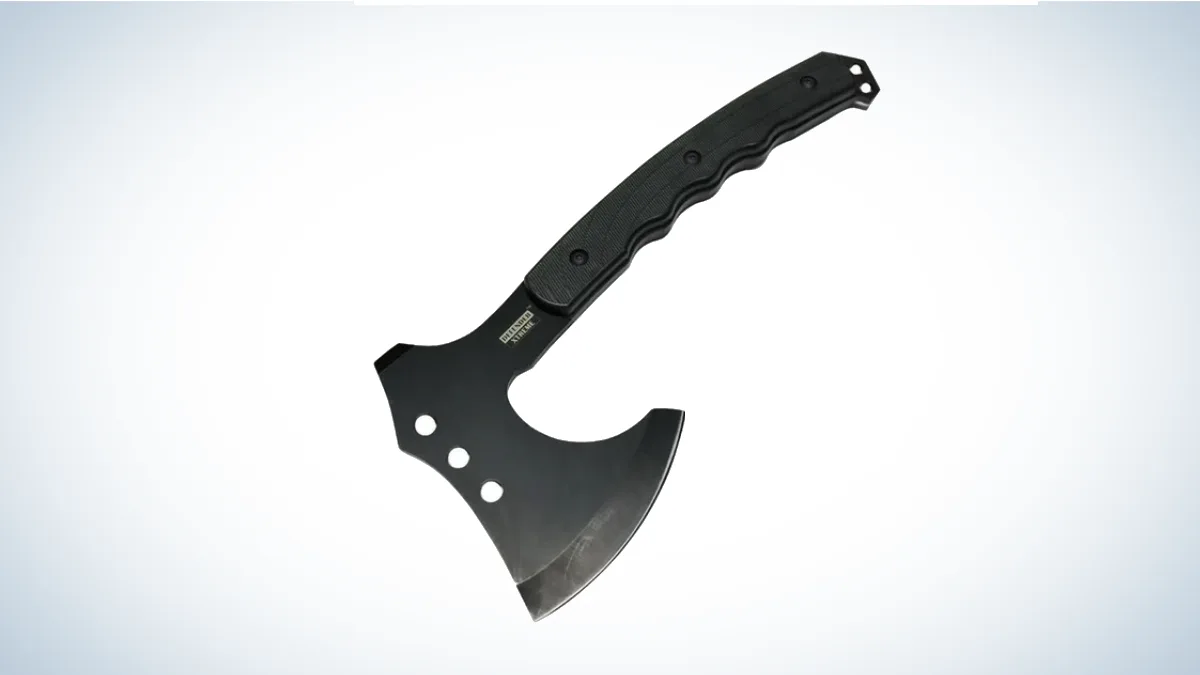
Specs
Blade Materials: Steel
Handle Materials: Steel
Weight: 10.8 ounces
Overall Length: 10”
Pros
Affordable price
Small, compact design
Durable materials
Ideal for kindling and carving
Cons
Not very versatile
If portability and budget are your two main criteria for choosing the best camping axe, then the Defender Xtreme Axe is reliable and does the job. At under $20, you can’t expect too much out of this tool, but it has stood the test of time in my personal experience. With proper upkeep, it continues to do a good job when I need it for cutting down smaller pieces of wood for kindling or even simple carving needs.
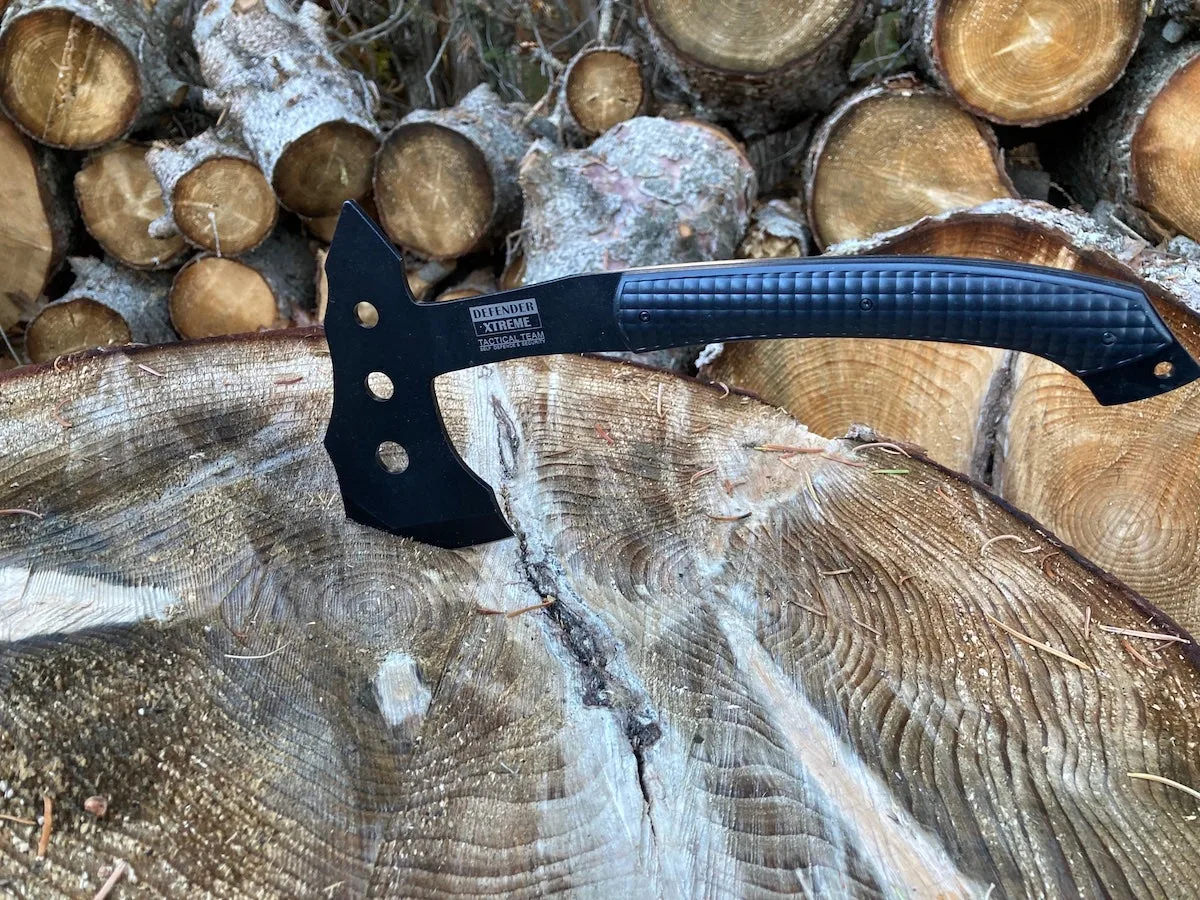
The Defender Xtreme axe has a textured non-slip grip that’s comfortable to hold. Meg Carney
The lightweight design is ideal for backpacking or bushcraft or even for keeping in my van for emergencies or car camping trips. There isn’t too much to say about this axe other than for the price, the functionality is hard to beat. It isn’t top-of-the-line, but it does what it says it does and decently well.
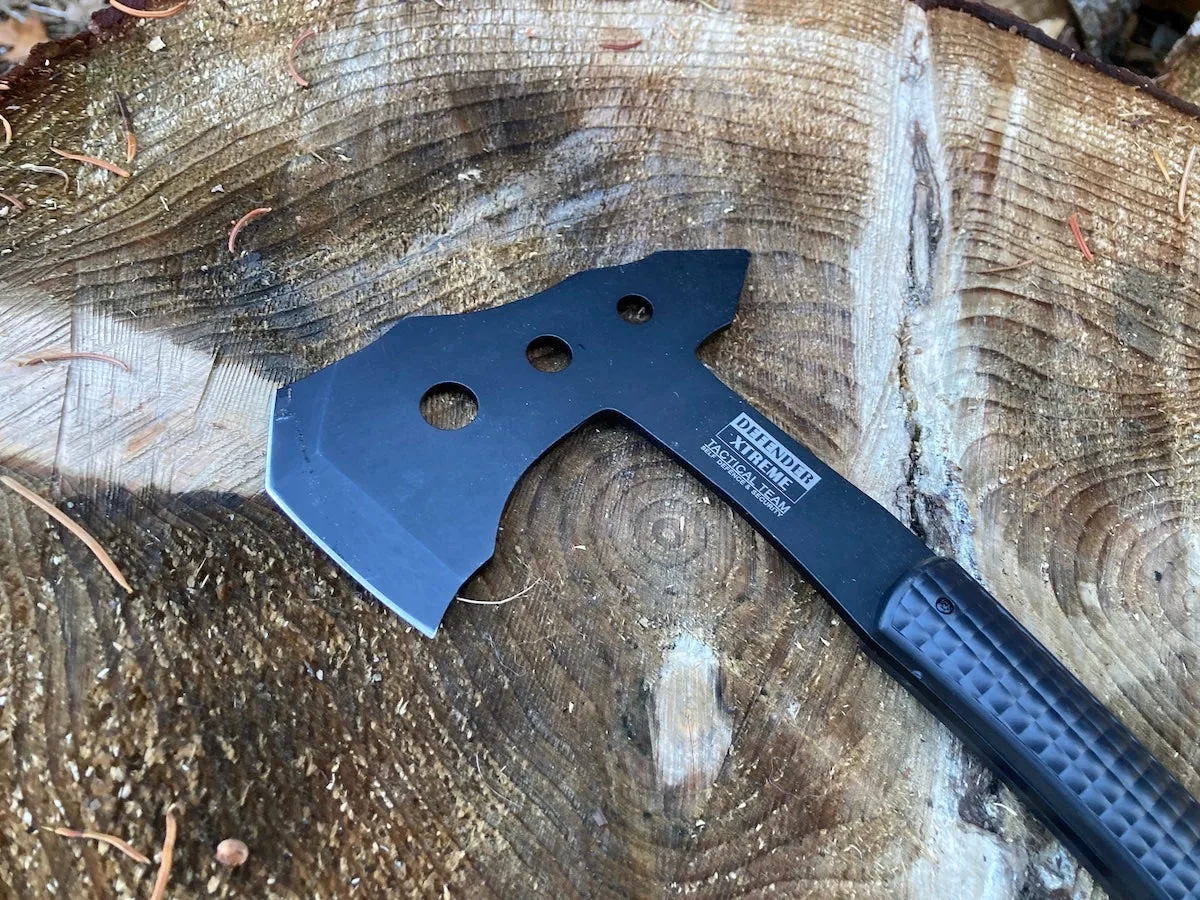
The sharp head of this axe makes cutting up kindling a breeze. Meg Carney
The only major complaint about this budget option is that the sheath can be hard to put back on, so be careful. I can see it being easy to have a slip of your hand when trying to take the sheath on or off and accidentally cutting your hand.
What to Consider When Choosing a Camping Axe
Intended Use
How you plan to use your camping axe—and how often—should be the first consideration. If you’re in the market for a splitting axe, an axe with a thicker cheek and heavier bit will work better. For activities like chopping or felling, an axe that has a thinner bit and a lighter head is ideal.
For something like bushcraft or backpacking, you may choose a hatchet. A full-size axe isn’t the most portable option due to the head weight and handle length.
Weight and Length
The weight and length of an axe impact the force while swinging, which impacts the best application and ease of use. Axes with head weights between 6 and 7 pounds work best for wood splitting and tree felling. However, most average users are fine with a head weight closer to 2 or 3 pounds.
In terms of length, axes with a handle around 36 inches are good for tall people or for chopping wood. For camping axes, a length between 28 and 31 inches is suitable for tasks like splitting firewood, shaving kindling, or felling small trees.
For backpacking, the weight and length have more to do with portability than function. For these purposes, a lightweight hatchet may work best.
FAQs
Q: What’s the best length for a camping axe?
If you’re looking for a camping axe that has more splitting or chopping power, an axe with a longer handle and a heavier head is ideal. For carving or detail work, lighter heads and shorter handles work best.
Q: What’s the difference between a camp axe and a hatchet?
The primary differences between a camp axe and a hatchet are the handle length, head size, and intended use. Axes typically have longer handles with heavier heads for more heavy duty chopping, splitting, or even felling trees. Hatchets are smaller and more portable and are designed for more delicate tasks like cutting down firewood for kindling.
Q: How sharp should a camping axe be?
An axe is designed to split through wood, not slice through it. A properly sharpened axe has a pointed edge and is free of dents. Having a “razor sharp” edge doesn’t work for an axe because it has to hold up to repetitive blows on wood.
Q: Do I need a camping axe?
Most campers don’t need a camping axe or even a hatchet. Unless you’re collecting all of your own wood, it is unlikely you’ll need to cut much. Having a small hatchet can be handy to cut down larger pieces of wood or shave off bits of kindling. If you do purchase wood, make sure you buy it from the area to avoid bringing in any invasive species. When collecting firewood around your camping area, it is best practice to take from dead and down trees instead of cutting off of live trees. It is rare that you won’t find small pieces of wood.
Best Camping Axes: Final Thoughts
Best Overall: Estwing Long Handle Camper’s Axe
Best for Splitting Wood: Gerber Bushcraft Axe
Best for Felling: Fiskars X27 Super Splitting Axe
Best Hatchet: Hults Bruk Almike Hatchet
Best Budget: Defender Xtreme Axe
The best camping axe for me may not be one of the best camping axes for you, and in many cases, an axe isn’t necessary for camping at all. If you’re someone who splits a lot of wood while camping or wants the convenience of a hatchet on hand to shave down large pieces of wood, there’s a range of options available on our list. While we approve of all the above, we liked the Estwing Camper’s Axe
the best thanks to the sturdy handle and powerful chopping ability.
Why Trust Us
For more than 125 years, Field & Stream has been providing readers with honest and authentic coverage of outdoor gear. Our writers and editors eat, sleep, and breathe the outdoors, and that passion comes through in our product reviews. You can count on F&S to keep you up to date on the best new gear. And when we write about a product—whether it’s a bass lure or a backpack—we cover the good and the bad, so you know exactly what to expect before you decide to make a purchase.

